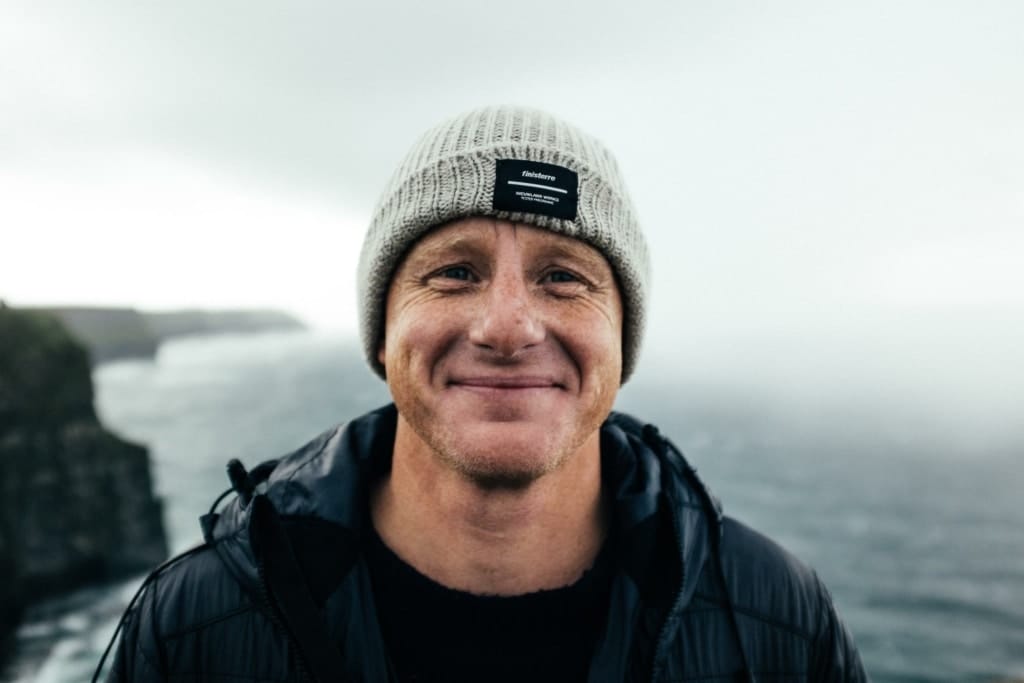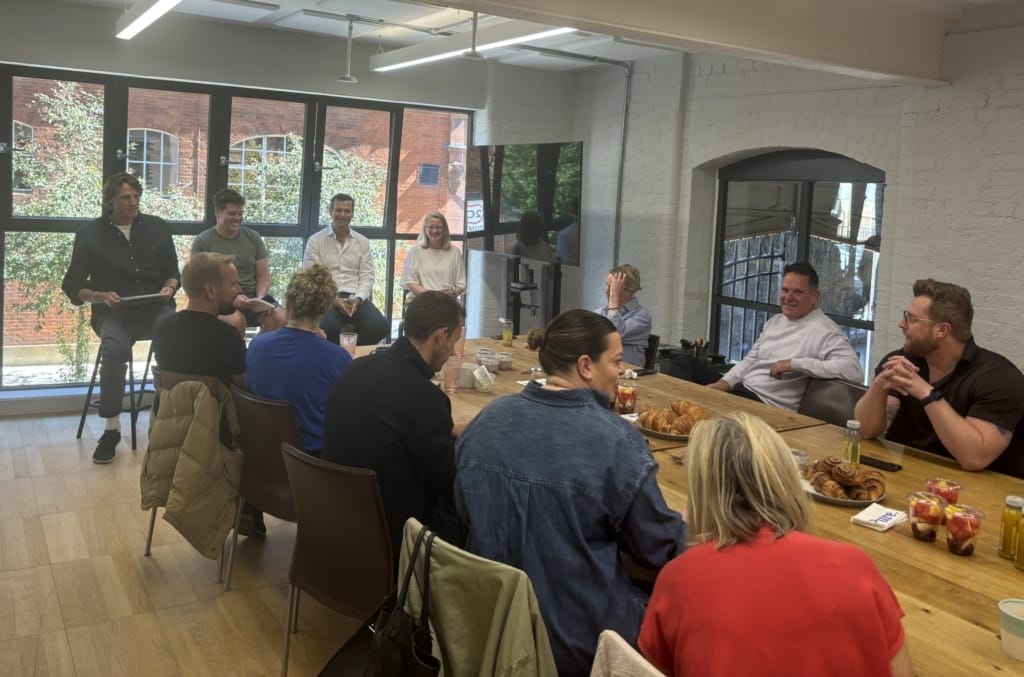For this month’s Behind the Brand interview, where we spotlight the exceptional founders and brands in the Active portfolio, we spoke to Anna Brailsford, CEO and co-founder of Code First Girls. Anna told us all about how Code First Girls is empowering women through free coding education, the pivotal role of diverse talent in shaping the future of AI and machine learning, her advice for fellow founders and much more…
Can you tell us a bit about Code First Girls and its mission? How is it different to other education companies tackling the gender gap in tech?
Code First Girls is one of the largest communities of women coders in the world having taught 150,000 women how to code for free. We consider more than gender in the community, it’s also about intersectionality. Nearly 60% of these women are from historically underrepresented ethnicities, with a significant proportion being the first generation to attend university.
The philosophy behind what we do is that women receive all the education necessary to go into a tech role completely for free. We also provide confidence coaches, mentorship and CV building help. There’s a whole ambit of support to make sure women feel super confident to succeed in a tech role.
We work with 130 companies who will subscribe to Code First Girls and are guaranteed to fill their technology roles, which could be anything from software engineers and data scientists to women in cybersecurity, vulnerability research, AI and Machine Learning. For every woman that is taking a job at one of these companies, effectively we are training more than 10 times as many women in local communities of their choice to build their talent pipeline out.
What did you do before becoming Co-founder and CEO of Code First Girls and how did it equip you for your role today?
I’ve been involved in educational technologies for a long time. My mum was an entrepreneur who owned an education technology business. From about the age of 16 I used to go and work at her company every summer which really shaped my foundational understanding of edtech.
My area of expertise was helping companies shift their revenue streams from primarily B2C revenue streams in edtech towards B2B and the moment where that went into the public domain was when I was commercial director at Lynda.com which is a household name in the US. Lynda.com was a fantastic educational video-based platform that ended up being acquired by LinkedIn and it became LinkedIn learning.
That was a real moment for educational technology because it was the fourth largest acquisition in social media history and up until that point, most acquisitions would be around the products we use on a daily basis. The integration of that learning platform into LinkedIn meant there was a significant data play behind understanding the skills and knowledge individuals needed to get a job or a promotion. This was effectively helping to feed the LinkedIn platform and the talent solutions behind it.

Code First Girls has helped over 150,000 women learn to code for free. How do you nurture this community of coders?
The beauty of having a community is you want to create a flywheel effect. You want to create a sense of brand identity that deeply resonates with women, not just because it’s great for society and enhances economic empowerment, but because it builds an emotional connection to our brand. When you create a community, particularly in the technology sector where there’s a massive supply and demand issue for women in tech, there really is a sense that women joining the community also want to pay it forward.
Effectively what we’re doing is teaching these women, then placing them in organisations where they become ambassadors for the Code First Girls brand within those companies. They might be joining at an entry level role, but I have no doubt that in my lifetime they will go on to become CTOs and future leaders and they will always remember that they were placed there by Code First Girls, and as a result they want to give back to the community.
When I created the brand, I wanted women to feel a sense of empowerment that we could actually do something about this problem. I wanted it to become almost a sense of identity that this was the way we were going to fix the issue. The referral mechanism also means we have 60% referral rate at Code First Girls. All the women coming through have usually spoken to a friend or family member and that’s the beauty of a flywheel.
Another important point about community is it enables you to do things with data that you wouldn’t be able to do previously. So, one of the reasons I wanted Code First Girls to exist is because I felt that women were practically invisible from talent data. The data simply wasn’t good enough and we wanted to make sure we had enough data to make women more visible in the technology world as well.
You work with over 130 businesses globally including Goldman Sachs, Nike, Ford, Deloitte and Skyscanner. How are you thinking about international expansion? Are there particular markets you’re focusing on over the next few years?
It’s so important to be a global provider. It’s very hard for companies to find suppliers in this space who have global agility, who can create a pipeline for an organisation in Warsaw to the same consistency and level as they can create a pipeline, for example, in Birmingham in the UK. So that consistency of approach and outcome is really important. And when you combine consistency with local data, such as giving organisations a deep dive into what women want in Warsaw versus what women want in Birmingham, it becomes an incredibly powerful product.
Our growth today has been quite organic and led by our buyers. As a British based company, we have the benefit of a lot of companies being headquartered in London that will have budgets across the whole of EMEA, or parts of APAC as well. Poland is a significant growth area right now where we’re seeing London headquartered companies putting budget. That differs to the US where the decision makers tend to sit in the US, and you need to be in the market to sell. But the beauty of Code First Girls is because we work with so many global organisations, I can say to my EMEA buyers, can you put me in touch with your US counterparts.
Everywhere we’ve been, we’re completely oversubscribed. It’s just a question of getting those subscriptions running with the organisations. This is a global problem we’re tackling.

Building a strong team is a key part of any company’s success. How big is your team now and what qualities do you look for in people who come to work at Code First Girls?
We have about 60 people who work in our hub in Farringdon, but we also have a big freelance model. We have hundreds of instructors who will go through our instructor academy and are effectively deployed to work based on the demand we have from our clients.
In terms of what I look for, I think more than anything I look for attitude and mindset. I think you can learn almost anything if you have the right attitude, mindset and the level of intelligence to apply yourself. I also ask a question around agility; can you cope with the fact that it might not work out perfectly the first time? When we’re scaling, that is going to happen on a weekly basis.
How about the women you teach to code, are there any personality traits or characteristics that you think lead to success in tech roles?
The most important thing we look for in the women we teach is curiosity and somebody who recognises they have the ability to keep learning. Technology changes at the speed of light. What we’re giving them enables them to think like a coder and once they have those skills its really important that they continue the development on the job.
If you are completely oversubscribed, we also want to test how hungry an individual is. Those who have high levels of hunger are more productive on the job, they tend to get promoted far more quickly and they become fantastic ambassadors for Code First Girls. So, it’s in our best interests to make sure we’re selecting people that have the ability to move up quickly, are ambitious and are going to keep learning on the job.
What are some of the biggest challenges you’ve faced in scaling Code First Girls, and how did you overcome them?
One of the biggest challenges is hiring, particularly at a senior level, and making sure you have the right senior individuals around you. As a founder you need to realise and accept that you can’t do everything yourself. You have to learn what your strengths are and lean into those, and then build a senior leadership team around you with an entrepreneurial mindset who can come in and be builders in the other areas. That builder mentality amongst the executive team and getting those right individuals in place has been a challenge.

Can you tell us a bit about your fundraising journey? How did you decide when and which investors to bring on board?
We decided to raise when we had product market fit, and we had enough traction around it that the company was becoming increasingly valuable. Our fundraising message was simple: we want to take Code First Girls across the world, so we want to raise investment to really scale and amplify our reach to a million women. The strategy behind the raise involved targeting an institutional investor while ring fencing a certain proportion for women angels. Initially I wondered if I was absolutely crazy because there are so few women angels in this country. But the adverse of that is it had an almost exclusivity effect. We were completely oversubscribed, and it enabled us to get really high profile women in the industry on the CAP table.
Everyone is talking about how generative AI is going to totally transform how we work and learn. What are your thoughts on AI’s impact on the tech sector and the work you’re doing at Code First Girls?
This is an interesting one because you hear people saying that AI is going to completely wipe out the need for coders and that’s simply not what I’m seeing right now.
Firstly, quite simply most organisations from my perspective are not ready. Some organisations are still understanding how to implement code in their organisations let alone AI and ML. If you look at digital transformation in large organisations, they are working to transform the legacy technologies they have right now. Exploring how AI can be applied doesn’t take the need away from having lots of coders to make it happen. Its just that’s the next step on the journey. I think we’re maybe five years away from seeing what impact it might have on the coding workforce.
My second point is that, while we welcome new technologies very much, it’s very important to think about who is actually creating those technologies to begin with. Globally, less than 1% of all AI and ML developers are women. If this is going to be technology that is going to take over the world, do we want a vast majority of our society excluded from the creation of it? Its more important than ever that we teach women how to code because coding is the foundation to add the specialist layer of AI and ML.
We need to focus on who is creating these technologies, on what data sets, and how do we mitigate that bias to make sure we are creating products that are truly representative of our society. We also need to think about how we police this technology once it’s been introduced. For me the answers around all of this are making sure that the individuals involved in making it to begin with are as diverse as possible. So, AI and ML make something like Code First Girls even more important for the future development of our technologies.

Finally, what’s your one piece of advice for a founder in the early stages of building their business?
I would say it’s a marathon its not a race. The amount of people I meet who tell me they’ve got a new business idea; they’ve got some fast investment and they’re going to change the whole world. My advice is that if you’re going to create a business it’s something you’ve got to see yourself in in 5, 10, potentially 15 years’ time. You have to constantly iterate along the way to deal with market changes. It’s not enough to be a great entrepreneur and have a good idea. It takes perseverance and determination to make it come into fruition.



